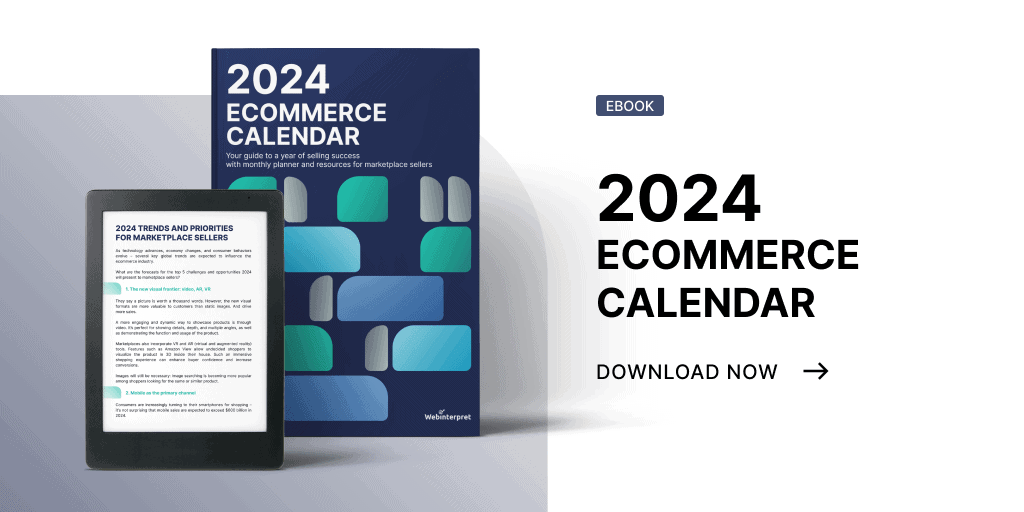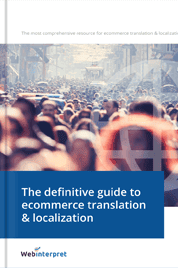
How cultural differences impact ecommerce buying experience
Is your online business prepared to navigate the intricate landscape of cultural diversity in ecommerce?
Failing to incorporate the concept of cultural diversity into your strategy can cost your brand valuable international sales opportunities.
Understanding cultural differences is crucial for optimizing the ecommerce buying journey and experience.
Read more and learn to accommodate online buyers from different cultural backgrounds.

Communication with your international customers
Ecommerce customer experience is a broad and culturally nuanced concept. It encompasses all the engagements, feelings, and experiences a client might have when interacting with your online store. This means all your online presence, not just your marketplace listings and the current purchase. Every detail counts!
To maximize chances of effective communication with foreign buyers, accommodate their cultural peculiarities. It’s not only about overcoming the language barrier, but also about knowing how to use a language.
In terms of everyday communication and the tone of voice, let’s take Germans as an example. They prefer a very formal communication tone, which contrasts with Americans who gravitate towards a more casual approach.
As a result, your business approach to Germans should be more formal and impersonal, e.g. you should use the form “Sie” or “Frau/Herr” (Mr/Ms) rather than the more casual you so commonly used in English-speaking countries.
Understanding cultural differences can prevent awkward moments.
The Chinese, for instance, may speak in higher voices and sound louder. In some cultures it can be incorrectly perceived as hostile. Awareness is the starting point.
Cultural differences affect ecommerce shoppers’ feeling of security
The degree to which buyers perceive sharing sensitive/personal data as safe, e.g. in the case of online purchases, varies across countries. Ignorance is not bliss: if online buyers don’t feel safe entering their personal or payment details, you’ll lose orders.
57% of Europeans on average feel uneasy about the security of their data, according to Symantec’s data. Spaniards express the biggest concern with 78% of respondents feeling insecure in this respect. Germany comes second (62%). UK-based customers, in turn, feel relatively comfortable about their data with less than half of the respondents being wary.
Let’s take a closer look at Germans who show a great deal of concern about how their personal data is used and handled. They have a tendency to be low users of social media with growing numbers now cancelling their social media accounts.
Germans prefer to use the Internet more as a passive form of communication and a source of information rather than building their social profiles. Additionally, many companies in Germany block access to social media sites, which impacts your content distribution channels.
Being familiar with these facts is important for managing your international customers. For instance, you’ll be aware that you may need to make extra effort to win the trust of your German online buyers. You may also need to reassure them in a special way before they press the buy button.
Now consider security and online payment. Although popular, credit cards are not always an obvious choice. For example, invoice is a popular payment method in Germany.
To make your foreign customers feel more secure and instil trust in them, research the most popular payment methods in given countries.
Otherwise, seeing unfamiliar payment methods, they may be wary about security and decide not to finalize he purchase process.
Create certainty for your international ecommerce buyers
Consumers in some countries may be more detail- and fact-oriented. For instance, German consumers are generally more careful and “misstrauisch” (distrustful). They tend to be curious about the legal situation and related regulations (AGBs: Allgemeine Geschäftsbedingungen). If they can’t find AGBs, they can find it mind-boggling.
Germans can also become skeptical about brands and products if they come across translation mistakes on the website. They tend to judge a website’s trustworthiness by trust badges that are frequently used by German ecommerce websites. Germans also prefer quality products, for example TÜV-certified ones.
What you can do is give your German customers more details and exact numbers to create more certainty. You can add trust badges to your website and hire a German native speaker to create flawless copy. Further, you can add an Impressum: a legally mandated statement included in books, magazines, newspapers and websites to state ownership and authorship.
You can optimize your checkout to maximize conversions. Provide the payment option the shopper is familiar with. Present the price in their currency so they don’t have to use a currency converter and/or decide to move on without completing the purchase. Take care of your international checkout in a few easy steps. For more tips on improving customer experience for your international clients check our free ebook:
Cultural differences affect color perception in different countries
Cultural awareness is useful when you choose colors for your website or brand. People across the globe don’t perceive colors in the same way. For instance, blue, the American corporate color, is seen as cold and evil in East Asia.
Colors should communicate desired values and emotions as well as reveal your product attributes. For this reason, if you sell high-end products, in many cultures black would be a better choice than pink as your signature color. The right color will help you position your brand and sell more.
90% of snap judgements about products can be based on color alone. Choosing the right colors can have a big impact on your conversion rates.
Check out a few examples of color perception in different countries:
Red
- Germany: unlucky, negative
- Denmark, Romania & Argentina: lucky
- China: lucky, a bride’s color, love
- France / the UK: masculinity
- the USA: love
Black
- Western cultures: grief, sadness, a dress of subservience for waiters and servants
- Japan: fear, powerful, expensive
- Germany: fear, anger, jealousy
- the USA: fear, anger, envy, jealousy, powerful, expensive
- China: powerful, expensive, trustworthy, high quality
White
- Japan: mourning, death
- Australia: happiness, purity
- the USA: happiness, purity
For more examples, read the free ebook about how colors can help with your ecommerce sales strategy.
[Download the Ultimate Ecommerce Icon Pack NOW]
International ecommerce, lifestyles & rules
Consider the lifestyle of online buyers from different countries. Lifestyle will affect their buying decisions and your sales approach. For instance, environmentally-oriented customers are conscious of depleting natural resources. This mindset will affect consumer choices, habits and purchasing decisions, e.g. cutting back on personal lifestyle.
Thus, in some markets, such as Germany or Scandinavia, consumers’ lifestyles reconcile ecology and sustainability with comfort and pleasure. Such consumers may prefer to buy a minimum amount of products but of better quality and at a higher price, e.g. organic products.
Further, cultural differences will point you towards restrictions that could get you into trouble. For example, if you want to sell a bunch of products on foreign markets, it may not even cross your mind that some of them (e.g. beauty products, cosmetics, certain tableware) may not be allowed to be sold online in specific countries. Check that out to avoid unpleasant surprises.
Cultural differences, ecommerce & advertising
Cultural differences can make or break the success of your advertising strategies. For example, Germans are information-oriented. They like to have complete information about products, e.g. to make the most informed decision by feature/price comparison. They value honesty and are suspicious of hyperbole and promises.
This is why your ads should include some solid data and case studies rather than sugar coating and emotional messaging. In some cultures sugar coating can soften criticism, but Germans prefer to get to the point. Thus, put focus on price/value information and some product attributes, e.g. performance, safety, price, nutrition or value.

If you’re American, you may perceive information-packed ads in Germany as cluttered. If you’re German, in turn, from your perspective American ads can appear trivial, simple-minded or to be hiding facts.
American ads, in contrast, often focus on information about components/contents, practicality of the product, research findings, shape/design, and customer satisfaction/loyalty.
If you’re American, you may perceive information-packed ads in Germany as cluttered. If you’re German, in turn, from your perspective American ads can appear trivial, simple-minded or to be hiding facts.
Cultural differences are present even when customers speak the same language
Acknowledge unique cultural characteristics and business practices, even in the case of countries that speak the same language. English itself is not a uniform language, but has a number of varieties, i.e. American, British or Australian, etc.
There are vocabulary and spelling differences. For example, the words “color” and “jewelry” (American English spelling) are spelled “colour” and “jewellery” in Britain. Further, when searching for the same item online, Americans may use a different word than Brits (“pants” vs. “trousers”).
Here’s the deal.
The UK and the USA can be viewed as similar markets: consumers speak English, wear similar clothes and follow similar trends. This may seem to be the case until … you dig deeper.
What may strike you at first is higher confidence and positivity in the USA than in the UK. This may be the result of the American Dream mindset and big success stories from American history that Brits have never experienced as a nation.
[Want to sell more? Watch this video with a holistic 5-step-formula for international marketplace growth]
In many cases it was adversities that drove American citizens. Brits, on the other hand, tend to be more cautious in their approach, careful with money and more prone to a negative and critical mindset, for example during times of recession.
As to spending and the future, UK consumers can be more pessimistic than Americans. According to the VisualDNA research done on 20,000 consumers, split evenly between the two countries, the British are three times more likely to be careful spenders.
This can be both negative and positive. Pessimistic individuals may not be heavy spenders, in general. However, they may be keen shoppers when buying products which increase the feeling of security, e.g. large purchases for the home or relevant electrical equipment.
Use this knowledge in your marketing and communications campaigns.
Ecommerce localization: offer native buying experience
To expand your international client portfolio, it’s usually not enough to translate your marketplace listing or ecommerce offer into different languages. It’s also about creating customized rules, dictionaries, size conversion tables and customized translations for specific categories and brands.
It’s also about different nationalities having different delivery preferences and expectations. Thus, Australians who live in a vast country may accept longer delivery times. Many Brits, on the other hand, whose country is pretty compact, will expect same-day delivery. Address their individual needs during the checkout moment or you may lose sales.
The bottom line:
The UK and the USA can be viewed as similar markets: consumers speak English, wear similar clothes and follow similar trends. This may seem to be the case until … you dig deeper.
Ecommerce & cultural differences: conclusion
We may be becoming more and more globally-oriented, but cultural setups that motivate human, e.g. buyer, behaviour haven’t disappeared. Brits will be Brits and Germans will be Germans.
Cultural differences impact customer preferences and buying behaviors.
Cultural awareness involves practically every aspect of your online sales strategy, such as customer service, advertising, selling and everyday communication.
Offering a localized customer experience adapted to specific cultural mindsets can have the single most impactful influence on your international sales conversions.

How to translate and localize in a way that sells? Download our FREE ebook!
Sources
Related Posts:
Ecommerce Newsletter
By clicking the “Subscribe now” button, you agree to receive our monthly e-mail newsletter and regular marketing and commercial communications by email from Webinterpret regarding marketing trends and our digital marketing services. You confirm that you have read and agreed to Webinterpret’s Terms of Service and Privacy Policy.


![Online marketplace strategies for ecommerce growth [guide] online-marketplace-strategies-free-ebook](https://www.webinterpret.com/wp-content/uploads/2023/04/online-marketplace-strategies-free-ebook-600x300.png)

